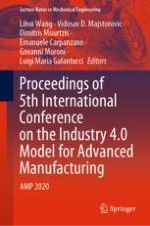2020 | OriginalPaper | Chapter
Similarity Based Methodology for Industrial Signal Recovery
Authors : Ramin Sabbagh, Alec Stothert, Dragan Djurdjanovic
Published in: Proceedings of 5th International Conference on the Industry 4.0 Model for Advanced Manufacturing
Publisher: Springer International Publishing
Activate our intelligent search to find suitable subject content or patents.
Select sections of text to find matching patents with Artificial Intelligence. powered by
Select sections of text to find additional relevant content using AI-assisted search. powered by
